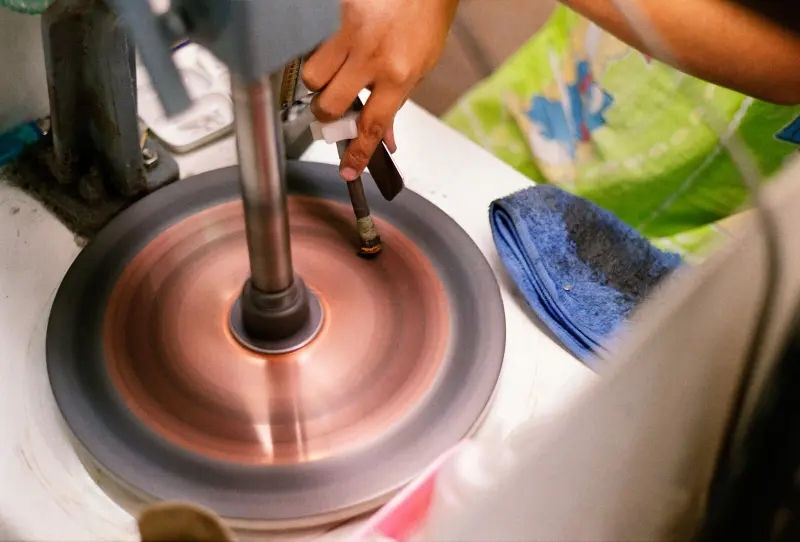The Garnet Group: A Closer Look
- Samuel Cini
- Aug 23, 2024
- 3 min read
Updated: Nov 7, 2024
The term "garnet" encompasses a group of minerals with common structural features as insular silicates, indicating a shared crystal structure and chemical affinity. The name "garnet" originates from the Latin "granum," signifying "grain." Garnets exhibit varying degrees of hardness, typically ranking between 6 and 7.5 on the Mohs scale, depending on their specific composition.
Garnets manifest in a spectrum of colours, serving as gemstones for millennia and garnering interest as investment assets. This overview provides insight into the diverse range of garnets.
1.55ct Tsavorite Garnet
Aluminium and Calcium Garnets: Diversity within the Garnet Group
The garnet group comprises two primary categories: aluminium and calcium garnets. Aluminium garnets, encompassing pyrope, almandine, and spessartine, offer a rich palette spanning from deep red to shades of orange and yellow. Calcium garnets, including uvarovite, grossular (encompassing hessonite and tsavorite), and andradite (comprising demantoid, melanite, and schorlomite), showcase a remarkable array of colours, from colourless and yellow to green, pink, red, brown, and black. Across all garnet species, the streak colour is consistently white.
8.35ct Pyrope Almandine Garnet
Here are some key species and their associated colours:
Almandine: Red (with violet undertones)
Pyrope: Red (with brown undertones)
Spessartine: Red to orange
Andradite: Yellow, green, or brown
Uvarovite: Green
Demantoid: Bright green
Mixed varieties also exist, with "rhodolite" being the most renowned—a pinkish blend of almandine and pyrope. Importantly, all garnets available on the market are presented in their natural state, without enhancements aimed at altering their colour or purity.
Historical Significance and Terminology: "Carbuncle"
Garnet-adorned jewellery has a long history, dating back to the Bronze Age and Ancient Egypt when garnets were used as grave goods. In the absence of 19th-century mineralogical advancements, any red stone was often categorised as a garnet. Even rubies and red spinels were occasionally referred to as garnets due to their red hue and grain-like appearance. Another term used was "carbuncle," derived from the Latin "carbunculus," signifying "small, glowing coal" and alluding to the gem's colour. Consequently, red varieties dominated the garnet category for centuries. The "Bohemian garnet," specifically the red pyrope, experienced a significant surge in popularity during the 19th century. As European deposits fell short of demand, garnets began to be imported from Africa and India.
10.32ct Rhodolite Garnet
Occurrence and Principal Deposits: Garnet Distribution Worldwide
Garnets are found in massive or granular form, with macroscopic crystals weighing up to 700 kilograms. The precise chemical composition varies depending on the surrounding rock. For instance, magnesium-rich pyrope is often located in peridotite and serpentinites. Garnets occur in various geological contexts, including metamorphic rocks like gneiss and eclogite, as well as igneous formations.
These deposits are widespread across the globe. In Europe, significant garnet deposits are situated in Russia. North America, particularly the USA, hosts important deposits, while Africa boasts garnet deposits in Nigeria, Tanzania, Kenya, Namibia, and South Africa. In Southeast Asia, Sri Lanka and India are prominent sources of garnets.
Garnets as Investments: The Top Choices
Garnets have enjoyed a storied history in jewellery and hold a special place in the hearts of collectors. While red garnet varieties are highly favoured among hobby collectors, the following garnet types and colours stand out as promising investment assets:
Spessartine (Mandarin Garnets): Renowned for their vibrant orange hue.
Tsavorite: A green variety belonging to the grossulars.
Demantoid: These yellow-green to emerald-green gems are part of the andratites and bear the name "diamond-like luster."
As with any gemstone investment, the value of each garnet is determined by key factors, including carat weight, clarity, cut, and colour. It's important to note that garnets, due to their high density, may weigh more carats than minerals of the same size.







Comentários